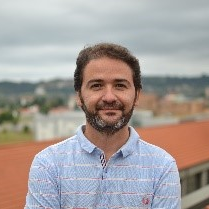Innovative Technologies in Power Converters
A special issue of Electronics (ISSN 2079-9292). This special issue belongs to the section "Power Electronics".
Deadline for manuscript submissions: closed (28 February 2022) | Viewed by 20741
Special Issue Editors
Interests: power electronics; DC–DC converters; power factor correction; LED drivers (VLC); WBG in power converters
Special Issues, Collections and Topics in MDPI journals
Interests: power electronics; DC–DC power converters; AC–DC power converters; bidirectional power converters; WBG in power converters; energy storage systems
Special Issues, Collections and Topics in MDPI journals
Special Issue Information
Dear Colleagues,
Power electronics is rapidly growing into one of the most important research fields in today’s society. The emergence of multiple applications has led to a drastic increase in interest from both industry and academia in researching new topologies, controls, semiconductor devices, and passive components. Among other applications, the following can be cited as an example of tracking lines of this evolution: electric mobility, biomedical applications, energy harvesting, smart grids and microgrids, renewable energies, energy storage systems or IoT, and power management. The relationship between those applications and research interest can be seen as a cycling loop: New applications lead to new studies on power electronics, and vice versa, innovative studies on power electronics lead to new applications. In this sense, the emerging technologies in power electronics can be classified into four different categories: innovative control techniques, new topologies for power converters, the use of wide band-gap semiconductor devices (SiC and GaN), and progress in passive components (capacitors and magnetic elements).
The main aim of this Special Issue is to seek high-quality submissions that highlight these innovative technologies in power converters and address recent breakthroughs in power electronics application-oriented design.
The topics of interest include but are not limited to:
- Emerging trends in digital control for power electronics:
- Adaptive and predictive controllers;
- Preventing aging and failure controllers;
- Neural network-based and Artificial Intelligence controllers;
- Internet of Things applied to power management;
- New emerging topologies:
- Modular arrangements (IPOS, ISOP, IPOP, multilevel power converters, composite power converters);
- Partial power processing converters;
- Multiple input–multiple output (MIMO) power converters;
- Resonant-based power converters and PWM-resonant converters;
- Use of Wide Band-Gap semiconductor devices:
- High switching frequency applications of GaN and SiC;
- High power density switching converters using GaN or SiC;
- Unique applications of SiC or GaN devices;
- Passive elements:
- New ferromagnetic materials for magnetic elements;
- Emerging dielectric materials and metamaterials for capacitors;
- Superconductivity and cryogen applications.
Prof. Dr. Diego Gonzalez Lamar
Dr. Aitor Vázquez Ardura
Guest Editors
Manuscript Submission Information
Manuscripts should be submitted online at www.mdpi.com by registering and logging in to this website. Once you are registered, click here to go to the submission form. Manuscripts can be submitted until the deadline. All submissions that pass pre-check are peer-reviewed. Accepted papers will be published continuously in the journal (as soon as accepted) and will be listed together on the special issue website. Research articles, review articles as well as short communications are invited. For planned papers, a title and short abstract (about 100 words) can be sent to the Editorial Office for announcement on this website.
Submitted manuscripts should not have been published previously, nor be under consideration for publication elsewhere (except conference proceedings papers). All manuscripts are thoroughly refereed through a single-blind peer-review process. A guide for authors and other relevant information for submission of manuscripts is available on the Instructions for Authors page. Electronics is an international peer-reviewed open access semimonthly journal published by MDPI.
Please visit the Instructions for Authors page before submitting a manuscript. The Article Processing Charge (APC) for publication in this open access journal is 2400 CHF (Swiss Francs). Submitted papers should be well formatted and use good English. Authors may use MDPI's English editing service prior to publication or during author revisions.
Keywords
- Adaptive and predictive controllers
- Preventing aging and failure controllers
- Neural network-based and Artificial Intelligence controllers
- Internet of Things applied to power management
- Modular arrangements (IPOS, ISOP, IPOP, multilevel power converters, composite power converters)
- Partial power processing converters
- Multiple input–multiple output (MIMO) power converters
- Resonant-based power converters and PWM-resonant converters
- High switching frequency applications of GaN and SiC
- High power density switching converters using GaN or SiC
- Unique applications of SiC or GaN devices
- New ferromagnetic materials for magnetic elements
- Emerging dielectric materials and metamaterials for capacitors
- Superconductivity and cryogen applications






